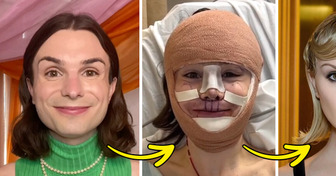On average, we spend 25 years of our life sleeping. This is necessary because getting proper rest is vital to our overall well-being. Sleeping well has many benefits — it not only revitalizes the body but also makes the brain work optimally.
We all realize that time is very precious, so it is of the utmost importance that the time spent sleeping is well spent. Bright Side brings you an in-depth analysis of the various sleeping positions to help you choose the right one for yourself.
Soldier position
Sleeping on your back with your hands at your sides is considered to be the best sleeping posture. This posture is similar to the Savasana pose in yoga. Also known as the soldier position, it is known to have many health benefits.
Pros:
- Perfect position to rest the spine, neck, and arms.
- Helps improve the overall posture.
- Reduces acid reflux.
- Helps maintain perky breasts.
- Cures insomnia.
-
Reduces the chances of headaches.
-
Prevents facial wrinkles.
Cons:
- As gravity pulls down the tongue, this posture may aggravate snoring in people suffering from sleep apnea.
- Can adversely affect a fetus.
- Can cause lower back pain.
Solutions:
- Try sleeping on your back without a pillow. It will keep your body in a neutral position and might help reduce snoring.
- Using a large pillow under the back of your knees will help support the natural curve of your lower back.
Starfish position
This position is a variation of the back-sleeper position. In this position, a person lies on their back but with their arms up on both sides of their head.
Pros:
- Perfect position to rest the spine and the neck.
- Cures insomnia.
-
Reduces the chances of headaches.
-
It helps reduce acid reflux since the head is elevated and the stomach is able to sit below, so substances from the stomach cannot re-enter the esophagus.
-
Prevents facial wrinkles and skin breakouts.
Cons:
-
As gravity pulls down the tongue, this posture may aggravate snoring in people suffering from sleep apnea.
-
The awkward position of the arms can exert pressure on the nerves in the shoulder, causing pain.
-
Can cause lower back pain.
Solution:
- Avoid using a pillow while sleeping in this position to allow your head, neck, and spine to rest in a natural position.
Log position
While sleeping in this posture, you lie on your side with both arms positioned downward in a straight line. It is advised to sleep on your left side to better rest your vital organs.
Pros:
- Ideal sleeping position for the spine as it receives complete support in its natural curve.
- Prevents back and neck pain.
-
Reduces sleep apnea and snoring.
- This is the best sleeping position for pregnant women.
Cons:
- As your top leg does not get enough support, the chances are high that you may develop back or hip pain.
- Side sleeping can lead to skin aging, facial wrinkles, and sagging breasts.
- In some cases, it can even cause neck pain.
Solutions:
- As this position can cause neck pain due to improper support to the neck, it is recommended to use a big pillow.
- Place a pillow between your thighs to support your top leg.
Yearner position
Sleeping on your side with your legs slightly bent, arms outstretched, and head slightly off-center is known as the yearner posture. It is advised to lie on your left side to better rest your vital organs.
Pros:
-
Prevents neck and back pains.
- Lying on your left side can reduce acid reflux.
- Helps reduce sleep apnea and snoring.
- Eases heartburn.
- Allows the body to clear waste from the brain more efficiently and reduces the risk of developing disorders like Alzheimer’s and Parkinson’s.
- Research shows that people sleeping in this position are less likely to wake up in the middle of the night. This is most likely due to the comfort the body gets.
Cons:
- Restricts the proper flow of blood and puts pressure on the nerves, which may result in pain in the shoulders and arms.
- Nerve compression may place a strain on internal organs like the stomach, liver, and lungs.
- Can cause saggy breasts and premature skin aging.
Solutions:
- Sleep on a satin pillowcase to reduce the chances of facial wrinkles.
- Place a pillow between your knees to support your upper leg.
Fetal position
The fetal position involves lying on your side with your knees drawn toward your chest and your chin tilted down. It is the most popular sleeping position among women — over 41% of respondents claim to prefer this posture. It is advised to sleep on your left side to better rest your vital organs.
Pros:
Cons:
- The extreme curl can put a strain on the neck and back, thereby causing pain.
- This position, like other side-sleeping positions, can cause skin wrinkles and saggy breasts.
Solutions:
- Use a firm pillow to support your head.
- It is recommended that people sleeping in this position alternate sides during the night.
Freefall position
Lying flat on your stomach while sleeping is not the best sleeping position, and most experts advise against it.
Pros:
Cons:
- Puts a strain on the spine and causes pain in the neck and lower spine.
- Since the blood circulation is cut off from the face, it leads to the development of wrinkles.
- Puts unnatural stress on the internal organs.
Solution:
- Try a little sideways position by putting a pillow between your stomach and the mattress.
Let us know in the comments below what your preferred sleeping position is. If you are following a sleeping position that is detrimental to your health, it is advisable to change your position. But that’s easier said than done. Have you tried doing that? Do you think you can change your sleeping posture? We are curious to know!












